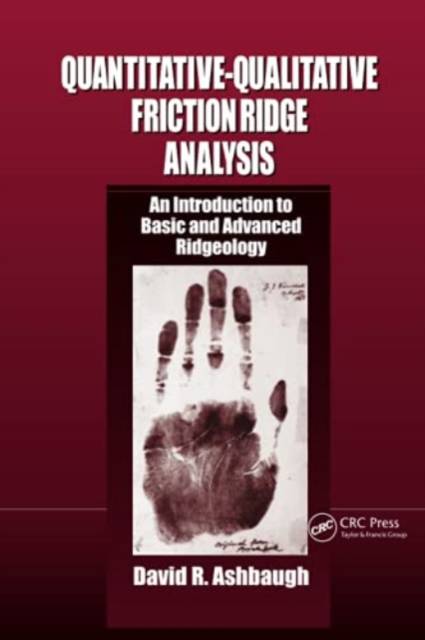
- Retrait gratuit dans votre magasin Club
- 7.000.000 titres dans notre catalogue
- Payer en toute sécurité
- Toujours un magasin près de chez vous
- Retrait gratuit dans votre magasin Club
- 7.000.0000 titres dans notre catalogue
- Payer en toute sécurité
- Toujours un magasin près de chez vous
Quantitative-Qualitative Friction Ridge Analysis
An Introduction to Basic and Advanced Ridgeology
David R AshbaughDescription
A thumb print left at the scene of a grisly murder. Fingerprints taken from a getaway car used in a bank robbery. A palm print recovered from the shattered glass door of a burglarized home. Indeed, where crimes are committed, careless perpetrators will invariably leave behind the critical pieces of evidence--most likely in the form of fingerprints--needed to catch and convict them. But the science of fingerprint identification isn't always as cut and dry as detective novels and movies make it out to be.
Quantitative-Qualitative Friction Ridge Analysis, a new book in the ongoing Practical Aspects of Criminal and Forensic Investigations series, examines the latest methods and techniques in the science of friction ridge identification, or ridgeology. David R. Ashbaugh examines every facet of the discipline, from the history of friction ridge identification and its earliest pioneers and researchers, to the scientific basis and the various steps of the identification process.
The structure and growth of friction skin and how it can leave latent or visible prints are examined, as well as advanced identification methods in ridgeology, including Poroscopy, Edgeoscopy, Pressure Distortion and Complex or Problem Print Analysis. The book, which features several detailed illustrations and photographs, also includes a new method for Palmar Flexion Crease Identification (palm lines) designed by the author and which has helped solve several criminal cases where fingerprints were not available. For crime scene technicians, forensic identification specialists, or anyone else pursuing a career in forensic science, this book is arguably the definitive source in the science of friction ridge identification.
Spécifications
Parties prenantes
- Auteur(s) :
- Editeur:
Contenu
- Nombre de pages :
- 248
- Langue:
- Anglais
- Collection :
Caractéristiques
- EAN:
- 9780367778736
- Date de parution :
- 31-03-21
- Format:
- Livre broché
- Format numérique:
- Trade paperback (VS)
- Dimensions :
- 156 mm x 234 mm
- Poids :
- 353 g

Les avis
Nous publions uniquement les avis qui respectent les conditions requises. Consultez nos conditions pour les avis.






